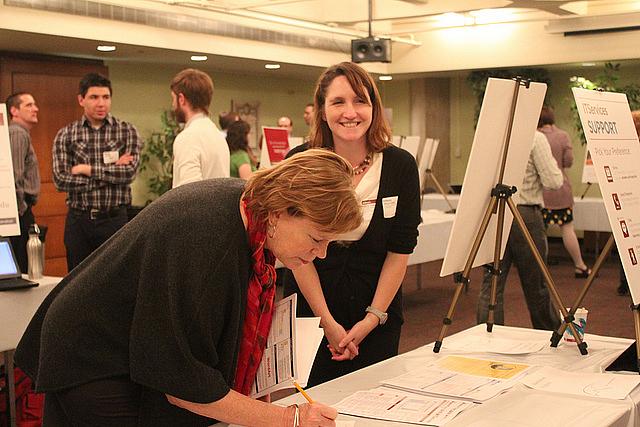California makes gains among uninsured in second enrollment season

Sign-ups for insurance on the federal and state healthcare exchanges will end in less than a month.
But before that happens, officials with Covered California, the state’s exchange for low- to middle-income residents, are hoping to enroll an additional 500,000 people.
The exchange aims to find strength in numbers. The more people who buy coverage on the exchange, the more leverage it has to negotiate rates with insurers. As of last week, Covered California had accepted about 300,000 new enrollees, and another 228,000 awaited news of eligibility. That’s in addition to 1.2 million people who enrolled in the exchange during last year’s inaugural enrollment season.
The state also announced that a push to enroll more Latino residents in Covered California has paid off. So far, about 50 percent have reported Latino origin among those who provided information about race. A year ago, only 28 percent of enrollees reported Latino identity. Latinos have the highest uninsured rate in the state.
This year’s enrollment season has been much less dramatic than the first, when people complained of long telephone waits and frustrating technology glitches. Across the country, the Obama administration reported that 6.8 million people have signed up for insurance through the federal exchange. The federal exchange does not include people who enrolled in Covered California and exchanges operated by 13 other states and the District of Columbia.
In California, the open enrollment season has also spurred more people to apply for Medi-Cal, the state’s Medicaid program. With the launch of Affordable Care Act (ACA) reforms in January 2014, many more people became eligible for Medi-Cal.
Over the past two months, California’s Department of Health Care Services reported it added 580,000 people. That brings total Medi-Cal enrollment to about 12 million people, about a third of the state’s residents.
Before the ACA took effect in 2014, the state had one of the highest uninsured populations in the state — about 22 percent of residents. Enrollment in Medi-Cal and Covered California last year cut that number by about half.
In Kern, Inyo and Fresno counties, Clinica Sierra Vista clinics are continuing to sign up as many people possible, said Bill Phelps, chief of programs for the center.
The nonprofit helps around 700 to 800 people a week apply for insurance. To handle the volume, the network of primary care clinics has hired extra workers. The scramble is less hectic than last year’s inaugural enrollment season. Phelps said people are far less confused. One key difference: Covered California’s website is working well. Wait times have decreased. Still, while the enrollment process has been streamlined, the clinic is always busy and people who walk in may have to wait several hours or more for help.
There’s also some sticker shock, Phelps says, when those who make too much money to qualify for Medi-Cal are told how much they must pay for coverage on Covered California. The exchange offers subsidies for people who make up to 400 percent above the federal poverty line, or $62,040 for a family of two. Depending on their income level, enrollees are required contribute for premiums. For people who have not paid for health care before, the premiums can seem like too much, Phelps said.
Clinica Sierra Vista primarily serves uninsured and Medicaid patients. Uninsured patients are asked to pay on a sliding scale, but many cannot afford the fees. But now that so many more patients are eligible for insurance, the clinic is urging them to come back for care and rather than take their insurance to another group of providers elsewhere.
“We want to make sure our patients have coverage,” Phelps said. “ We need to treat as if potential customers. It’s a competitive world.”
Photo by Quinn Dombrowski via Flickr.
